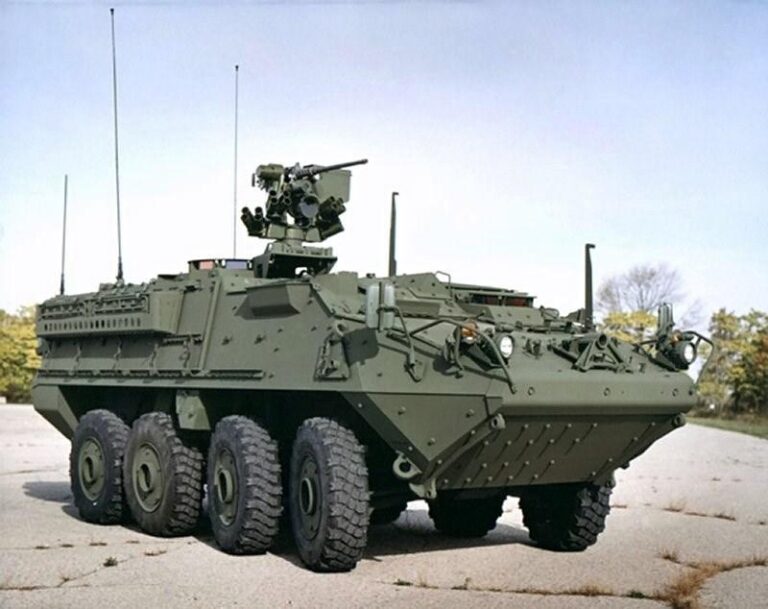Argentina has taken a significant step in bolstering its defense relationship with the United States through a new agreement involving Stryker armored vehicles. The deal, announced this week, marks a notable development in Argentina’s efforts to modernize its military capabilities while deepening strategic ties with Washington. This collaboration comes amid a broader context of shifting defense partnerships in the region, signaling Argentina’s intent to enhance interoperability and strengthen its security posture alongside key international allies.
Argentina Strengthens Military Capabilities Through Strategic Acquisition of Stryker Vehicles
Argentina’s procurement of Stryker armored vehicles marks a significant stride in modernizing its armed forces and enhancing interoperability with the United States military. This acquisition is expected to elevate the operational capabilities of Argentina’s ground troops by providing enhanced mobility, protection, and firepower. The multi-role nature of the Stryker platform will allow the Argentine Army to deploy these vehicles across diverse terrains, from urban environments to rugged border areas, effectively addressing evolving security challenges.
Key benefits of the Stryker deal include:
- Advanced armor protection to improve troop survivability
- Improved mobility and speed for rapid deployment
- Integrated communication systems facilitating real-time battlefield data sharing
- Potential for future upgrades and customization to meet mission-specific demands
| Vehicle Feature | Capability |
|---|---|
| Armor | Protection against IEDs and small arms fire |
| Engine | Mobilizes up to 60 mph on roads |
| Armaments | Equipped with 12.7 mm machine gun or 30 mm cannon |
| Communications | Integrated digital battlefield network |
Implications for US-Argentina Defense Collaboration and Regional Security Dynamics
The acquisition of the Stryker armored vehicles marks a significant deepening of defense cooperation between the United States and Argentina, reflecting a mutual interest in strengthening regional security architecture. This move not only enhances Argentine military mobility and versatility but also signals Washington’s commitment to fostering a stable balance of power in South America. As defense partnerships evolve, both nations stand to benefit from increased joint training, intelligence sharing, and interoperability efforts, which are expected to bolster responses to transnational threats such as organized crime and illicit trafficking.
Regionally, the implications extend beyond bilateral ties, impacting broader security dynamics across South America. Enhanced US-Argentina defense collaboration introduces a strategic pivot that may encourage neighboring countries to recalibrate their own security policies. Key effects include:
- Strengthened deterrence: A more capable Argentine military equipped with advanced US systems could discourage external interference and assertive posturing.
- Regional interoperability: Facilitating joint exercises with regional partners, fostering cohesion among allied forces in crisis scenarios.
- Geopolitical signaling: Demonstrating US interest in maintaining influence in Latin America amid rising global competition.
| Aspect | Potential Impact | ||||||||||||
|---|---|---|---|---|---|---|---|---|---|---|---|---|---|
| Military Readiness | Elevated rapid response capabilities | ||||||||||||
| Diplomatic Relations | Closer strategic dialogue and cooperation | ||||||||||||
| Regional Balance | Recommendations for Sustained Partnership and Enhanced Interoperability Between Armed Forces To fortify the growing defense relationship between Argentina and the United States, it’s essential to focus on long-term, practical solutions that foster interoperability and mutual trust. This includes prioritizing joint training exercises that mirror real-world scenarios, enabling both forces to synchronize tactics and operational doctrines effectively. Additionally, establishing dedicated communication channels and shared intelligence platforms can accelerate decision-making processes and reduce misunderstandings during combined missions. Key areas for collaboration should include:
To ConcludeAs Argentina moves forward with the Stryker deal, the transaction signals a notable deepening of defense cooperation between Buenos Aires and Washington. This agreement not only enhances Argentina’s military capabilities but also reflects a broader strategic alignment amid evolving regional and global security dynamics. Observers will be watching closely to see how this partnership influences future defense collaborations in the hemisphere. | . . .




